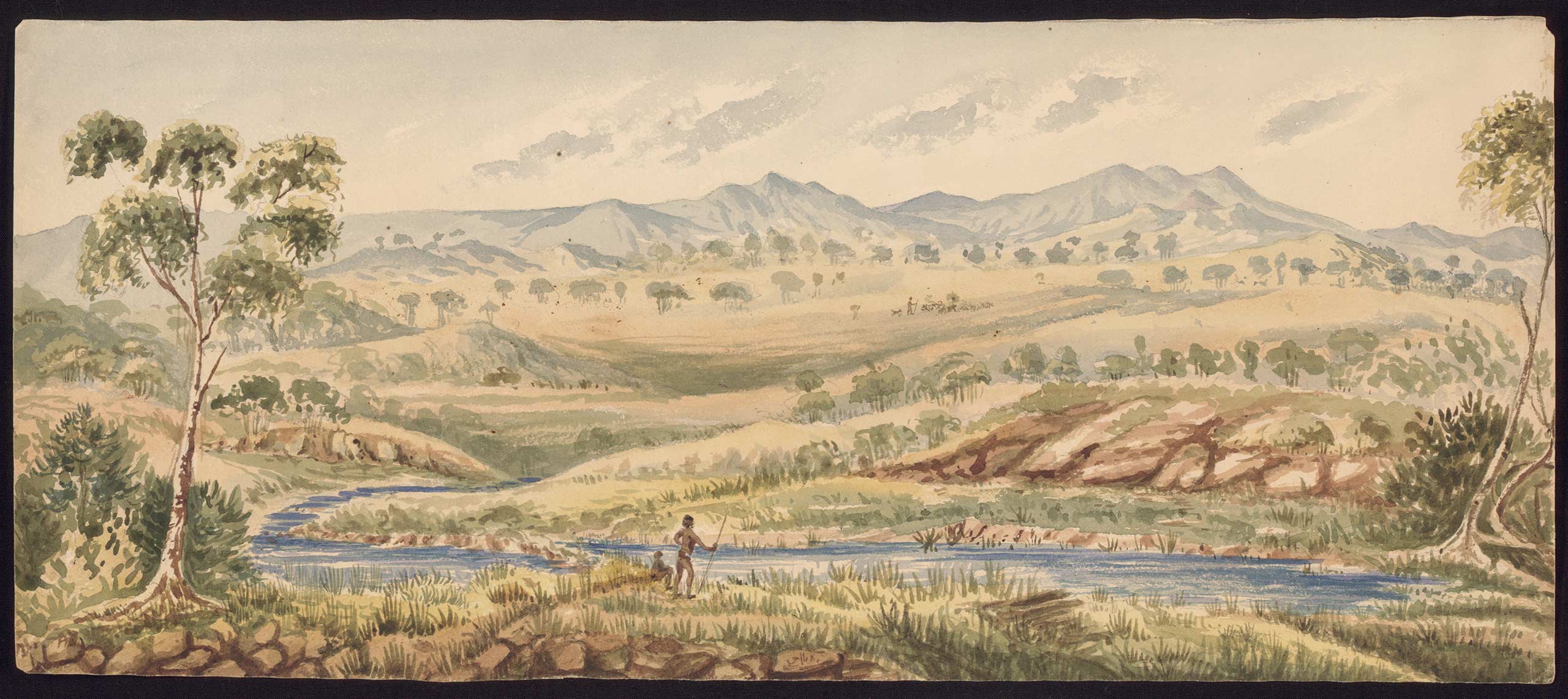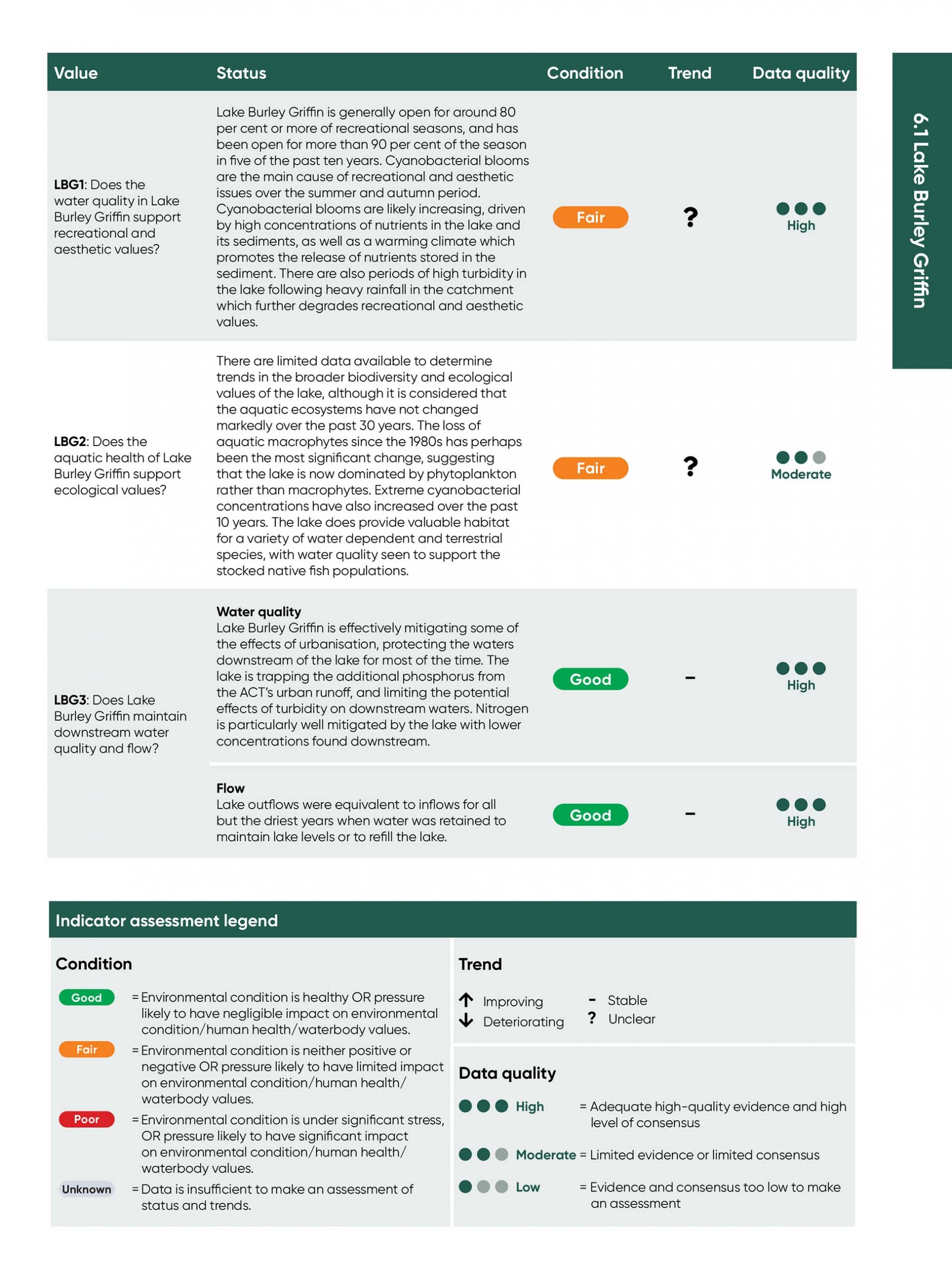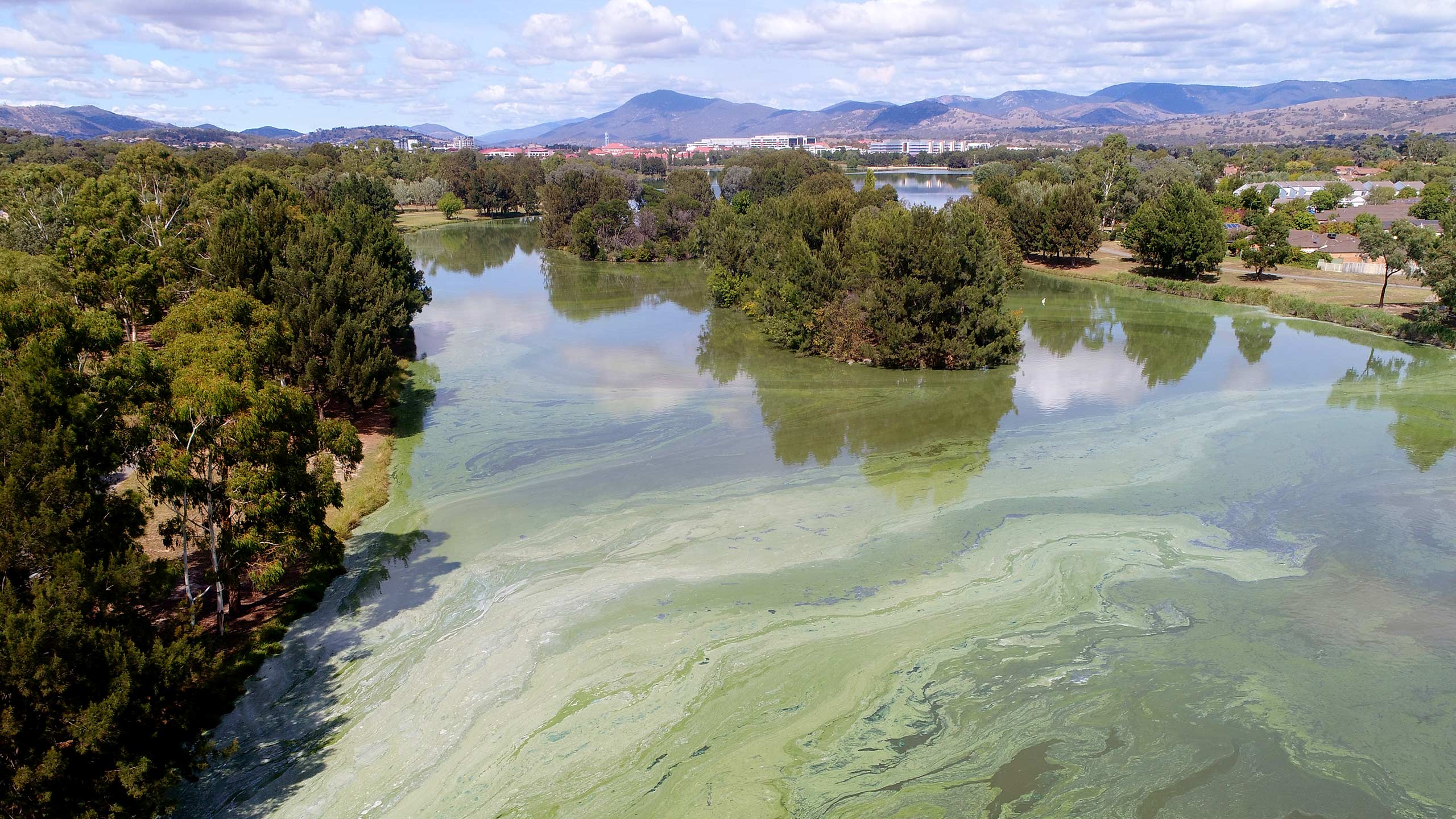Why did we investigate our lakes and waterways?
In 2012, this Office published an Investigation into the state of Lake Burley Griffin. In the years since then, numerous other reports, investigations and reviews were commissioned by the ACT Government to help develop management plans and policies for our waterways.
The same management and investment opportunities were repeatedly identified over this decade. Today, many of the recommendations made are either outstanding or ongoing.
Water quality is still an environmental concern. The summers of 2020–21 and 2021-22 saw frequent reports of blue-green algal outbreaks in Lake Tuggeranong and Lake Burley Griffin, resulting in lake closures.
These outbreaks reveal complex, significant and enduring issues in the urban lakes and waters of the ACT. Our new Investigation explores these issues.

What does the Investigation cover and where can I find out more?
The State of the Lakes and Waterways in the ACT Investigation assesses the condition of Canberra’s urban waters and their management. The investigation includes the following urban waters:
1. Lake Burley Griffin, Lake Ginninderra and Lake Tuggeranong
2. The waterways that flow through the urban area and into the Murrumbidgee River, including the Molonglo River and tributaries, Ginninderra Creek, Tuggeranong Creek, Sullivans Creek and,
3. The urban ponds and wetlands.
To view the report click here.
The University of Canberra analysed the physical pressures and condition of the various lakes and waterways.
Alluvium examined policies, plans and strategies for water management in the ACT and region.


Canberra’s waterways, lakes, ponds and wetlands
The Canberra community loves its urban waters. These deliver many benefits beyond stormwater management and water quality including ecosystem services, biodiversity support, climate regulation, and water for playing fields and gardens.
Canberra’s urban waters are an integral part of the design and character of the national capital. Urban waters significantly contribute to the liveability of the city providing a focal point for the community and sites for recreation.
But, as the expectations of our waterways and their role differ widely, urban waterway management remains a contentious issue in Canberra.
To learn more about the multiple values of Canberra’s urban waterways click here.
Ngunnawal connections to water
The Ngunnawal people are the ACT region’s first inhabitants, having lived here for more than 25,000 years. Ngunnawal people’s cultural roots extend to caring for their river Country through links to the Murrumbidgee, Molonglo and Cotter Rivers—each of which are part of the broader Murray-Darling Basin.
These watercourses and byways follow and represent Songlines and Dreamings here in the south-east, just as they do in other parts of the country.
Recognition of the cultural value held by the Ngunnawal people of Canberra’s urban waterways is critical for their effective management. The value of Traditional Ngunnawal water knowledge needs to be recognised and incorporated into the contemporary management of Canberra’s urban waterways to improve aquatic health.

What happens to water in our city?
Before we explore the conditions of Canberra’s lakes, rivers, creeks and ponds, we need to understand how rainwater moves through a city. This infographic explains what happens to water after it rains. Rain falling in urban areas becomes runoff, which collects and transports pollutants as it travels into lakes and waterways. These pollutants accumulate and can affect water quality.

How healthy are our waterways?
This report looks at the condition of:
- Lake Burley Griffin
- Lake Tuggeranong
- Lake Ginninderra
- Molonglo River
- Tuggeranong Creek
- Ginninderra Creek
- Sullivans Creek
- Urban ponds and wetlands (15 sites, 26 sampling locations)
We look at:
- Identifying pressures on health
- Data trends including hydrology, inflows and outflows
- Water quality
- Recreational water quality
- Closures
- Cyanobacteria
- Algal blooms
- Nutrients and sources
- Turbidity
- Biodiversity and ecosystem health
- Fish
- Knowledge gaps
Each waterbody is given a scorecard, like this one shown for Lake Burley Griffin. You can jump into the report and check the condition of the lake, river, creek or ponds that matter the most to you.
To learn more about the state of your local lake and waterways click here.

The water quality of any individual body of water can be highly variable and depends on a range of conditions and events.

In addition, long term consistent data sets are not available for many sites within the ACT monitoring network, which presents a significant knowledge gap. Some key results are:
- Lake Burley Griffin receives already degraded water via the Molonglo River, with the quality of water dependent on management and aquatic health in NSW and the ACT.
- Lake Tuggeranong often has poor water quality and regularly suffers from cyanobacterial blooms and high levels of faecal contamination.
- Lake Ginninderra does not have a history of significant water quality issues that have led to extensive lake closures; however, it does not appear to be effectively mitigating the effects of urbanisation for the downstream receiving waters.
Key facts about our lakes



Are there problems with water management in the ACT?
The management and governance arrangements relating to the ACT’s urban waterways are complex. Several parts of government are responsible for a range of policies, plans and strategies. There is no single entity responsible for catchment-wide planning and management.
The responsibilities for managing urban water span four ACT Government directorates which are composed of multiple teams.
The Commonwealth Government’s National Capital Authority is also involved. These different groups must coordinate and collaborate effectively.
The Canberra community also play a key role in managing the quality of urban lakes and waterways, including through active on-ground community-based groups that care for wetlands and ponds.
This Investigation finds several opportunities to improve management of our lakes and waterways, where:
- Current policies and strategies aren’t integrated and don’t manage water on a broad, catchment scale
- There is no clear governance structure to guide strategic decision-making for protecting and improving the health of urban lakes and waterways
- Flow and water quality objectives in urban lakes, ponds and waterways are not well defined for the range of social and environmental values
- While water Sensitive Urban Design (WSUD) assets are generally cost-effective, their operation and maintenance are under-resourced.
The Territory needs an ACT Office of Water
This would be a body responsible for integrated catchment management at an urban scale, as well as strategic decision-making for the urban lakes, ponds and waterways—including stormwater management—in the ACT.
What does the report suggest the ACT Government do?
01. The ACT Government should revisit water-related recommendations made in previous reports and make sure these have been completed, providing public updates on how these were met or not met
02. Every year, the ACT Government should publicly explain how it spends the “Water Abstraction Charge”. The Government gathers the money for this charge direct from consumers to protect the ACT’s drinking water catchments
03. As well as funding and supporting the Waterwatch monitoring program, the ACT Government should fund a program for more continuous monitoring of water quality across Canberra
04. The ACT Government should publish all information on water quality on one website so that accurate data is easy to find
05. The ACT Government should recognise that the Ngunnawal people have a deep understanding of the environment and include their Traditional Knowledge in water management
06. Infrastructure that improves water quality in the ACT (such as ponds and wetlands) should receive more funding from the ACT Government so that they can be maintained at full working capacity. Activities that support better water quality (such as street sweeping) should receive more funding to happen more often
07. The ACT Government should create a framework for managing all the rivers, lakes and waterways by merging existing policies, plans and strategies—to ensure these are all working towards the same goals
08. The ACT Government should be responsible for water quality in Lake Burley Griffin, instead of the National Capital Authority
09. The ACT Government should improve community involvement in decision-making around lakes and waterways—including their management
10. The ACT Government should change the Environmental Protection Authority’s approach so it is more focussed on outcomes to protect our lakes and waterways
11. The ACT Government should make sure we are considering how climate change will affect our lakes and waterways when making decisions, policies, plans and strategies
12. The ACT Government should pay more attention to water quality impacts on our lakes and waterways during construction and land development, which includes questioning whether development should occur at all in some areas.
The above points are a simplified summary of the full recommendations—which are available within the report.
Next steps
The State of the Lakes and Waterways in the ACT Investigation will be presented to the Legislative Assembly on 2 August 2022.
The ACT Government provided a response to the 12 Recommendations outlined in the report in November 2022.

